Glorious And Scary Orava Castle – Realms Of Nosferatu And A Historical Landmark Of Slovakia
Jan Bartek – AncientPages.com - Glorious and scary Orava Castle is often associated with the realms of Nosferatu today, but the history of this ancient building goes much further in time.
Orava Castle. Credit - Wojsyl, CC BY-SA 3.0
In 1922, when the horror movie Nosferatu was shot, it was decided to use the castle as the residence of the legendary vampire. It was a good choice because Orva Castle has all the spooky elements required in a scary vampire movie.
Nicknamed the "Dracula Castle," the magnificent ancient castle is situated on a high rock above the Orava River in Oravský Podzámok, Slovakia, a territory as early as the Primeval Age.
Orava Castle Is Much More Than The Home Of Nosferatu
Many people see little or no distinction between Czechs and Slovaks, which is perfectly understandable because it wasn't so long ago that we used the name Czechoslovakia. People of both countries lived together in a single state.
Still, though these two countries have many cultural similarities, there are also several significant differences.
With its scary atmosphere and mysterious underground passages, the Orava Castle attracts many tourists who want to enjoy and admire this tremendous historical landmark of Slovakia.
Some people who visit the Orava Castle ask if this place was the home of the horrifying, bloodthirsty vampire, but after learning the truth, they tend to be a little disappointed.
The surrounding atmosphere makes the Orava Castle look remarkable. Image credit: Orava Castle Museum
To begin with, one must remember Nosferatu was only a movie character.
Count Dracula existed and was often cruel, but he wasn't a vampire. His real name was Vlad III, but he was often called Dracula, and he was a Prince in Wallachia, a part of present-day southern Romania, who lived between 1431 and 1476.
Vlad used severe methods to restore order in a lawless state. He also dared to drive the occupation force, the Ottomans, out of the country. But Vlad had a dark side, too.
Regarded today as a national hero, Vlad III most likely inspired the Irish author Bram Stoker, who "borrowed Vlad's name for his Transylvanian count in the book "Dracula" from 1897. We have to remember that 'Dracula' is literally translated in Gaelic as Drac Ullah, which means 'bad blood.'" 1
Its old age is visible. Image credit: Orava Castle Museum
Orava Castle Was Almost Erased From Ancient History Pages
The ancient past of the Orava Castle is also fascinating, especially since the beautiful building was almost erased from the history pages.
After the Tartar invasion in 1241, people started to build the castle on an old wooden fortification site. It took several centuries, but the castle grew in size in time thanks to several owners who reconstructed it.
The original design of 'Dracula Castle' was in Romanesque and Gothic style, but later it was reconstructed as a Renaissance and Neo-Gothic structure. In the mid-16th century, the Thurzo House, a Hungarian noble family, invested in the Orava Castle and turned it into a magnificent building, but its present form was not finalized until 1611.
After the death of the last descendant of the Thurzo family, the castle had several owners, but they didn't bother to invest in the maintenance of the building. Then, in 1800, a tragic fire destroyed the Orava Castle, and its owners could no longer use it as a residence.
Entering through this door gives you the impression you're visiting a different world. Image credit: Orava Castle Museum
When World War I and II broke out, it was evident that no one had time to think about this ancient castle. At this point, it seemed Orva Castle was not meant to be, but fortunately, restoration work started again after WW II and the castle became a national monument. Orva Castle survived against all odds.
With its 154 rooms, 754 stairs, palaces, towers, and underground passages, it's difficult to say what part of the Orava Castle is most interesting. The beautiful Chapel of St. Michael and the Knights' Room are attractive places to explore among visitors.
To many, this will always be Dracula's Castle. Still, putting fascination with Nosferatu and blood-sucking vampires aside, we should never forget that Orava Castle commemorates many historical events and movements that had a decisive impact on the fate of Slovakia.
Written by Jan Bartek - AncientPages.com Staff Writer
Updated on Nov 21, 2023
Copyright © AncientPages.com All rights reserved. This material may not be published, broadcast, rewritten or redistributed in whole or part without the express written permission of AncientPages.com
Expand for referencesJ. Podolak. "The Development of Ethnography in Slovakia." Midwest Folklore 8, no. 2 (1958): 69-84. Accessed January 24, 2020.
More From Ancient Pages
-
 Evidence People Lived In Australian Desert 50,000 Years Earlier Than Previously Thought
Archaeology | Sep 22, 2018
Evidence People Lived In Australian Desert 50,000 Years Earlier Than Previously Thought
Archaeology | Sep 22, 2018 -
 Freya – Vanadis: Beautiful Desirable Goddess And Her Brisingamen Necklace In Norse Mythology
Featured Stories | Jan 21, 2018
Freya – Vanadis: Beautiful Desirable Goddess And Her Brisingamen Necklace In Norse Mythology
Featured Stories | Jan 21, 2018 -
 Peculiar Artifact Discovered In Tomb Of The Warrior Queen Fu Hao
Artifacts | Oct 26, 2018
Peculiar Artifact Discovered In Tomb Of The Warrior Queen Fu Hao
Artifacts | Oct 26, 2018 -
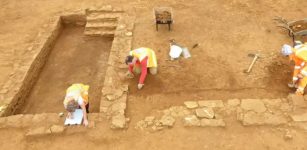 Unusual 4,000-Year-Old Site And Other Curiosities Discovered In Overstone, Northamptonshire, UK
Archaeology | Jan 10, 2023
Unusual 4,000-Year-Old Site And Other Curiosities Discovered In Overstone, Northamptonshire, UK
Archaeology | Jan 10, 2023 -
 DNA Says You’re Related To A Viking, A Medieval German Jew Or A 1700s Enslaved African? What A Genetic Match Really Means
DNA | Jun 7, 2024
DNA Says You’re Related To A Viking, A Medieval German Jew Or A 1700s Enslaved African? What A Genetic Match Really Means
DNA | Jun 7, 2024 -
 Chester Stash Could Have Been Savings Hidden In An Iron-Glazed Mug
Archaeology | Oct 13, 2015
Chester Stash Could Have Been Savings Hidden In An Iron-Glazed Mug
Archaeology | Oct 13, 2015 -
 Vikings May Have Made Imitation Gold Dinar Found In Morston, Norfolk – Expert Says
Archaeology | Apr 5, 2023
Vikings May Have Made Imitation Gold Dinar Found In Morston, Norfolk – Expert Says
Archaeology | Apr 5, 2023 -
 Egyptian King Seti I Documented His 3300-Year-Old Accomplishment On Triumphal Stele
Archaeology | Feb 27, 2023
Egyptian King Seti I Documented His 3300-Year-Old Accomplishment On Triumphal Stele
Archaeology | Feb 27, 2023 -
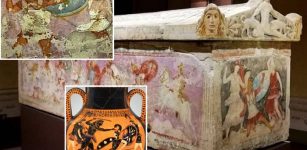 Sarcophagus Of The Amazons: Etruscan Coffin With Paintings Of Dynamic Fighting Scenes Of Greeks With Amazons
Featured Stories | Oct 18, 2022
Sarcophagus Of The Amazons: Etruscan Coffin With Paintings Of Dynamic Fighting Scenes Of Greeks With Amazons
Featured Stories | Oct 18, 2022 -
 Archaeological Mystery Of Laos Megalithic Jars Continues – New Attempt To Solve The Riddle
Archaeology | Mar 12, 2021
Archaeological Mystery Of Laos Megalithic Jars Continues – New Attempt To Solve The Riddle
Archaeology | Mar 12, 2021 -
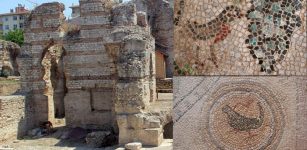 Beautiful Zeugma-Like Mosaics Unearthed In Sinop Province, Northern Turkey
Archaeology | Oct 17, 2020
Beautiful Zeugma-Like Mosaics Unearthed In Sinop Province, Northern Turkey
Archaeology | Oct 17, 2020 -
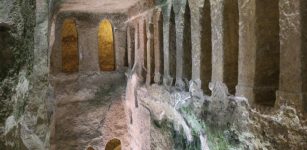 Largest In Europe Underground Church Of Saint-Jean of Aubeterre Built By 12th Century Benedictine Monks
Featured Stories | Feb 12, 2016
Largest In Europe Underground Church Of Saint-Jean of Aubeterre Built By 12th Century Benedictine Monks
Featured Stories | Feb 12, 2016 -
 Remarkable South-Pointing Chariot – Ancient Cybernetic Machine Invented 1,700 Years Ago Is An Engineering Masterpiece
Ancient Technology | Jul 17, 2014
Remarkable South-Pointing Chariot – Ancient Cybernetic Machine Invented 1,700 Years Ago Is An Engineering Masterpiece
Ancient Technology | Jul 17, 2014 -
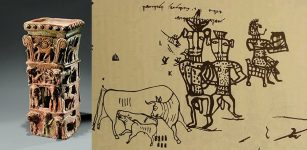 Ancient ‘Yahweh And His Asherah’ Inscriptions At Kuntillet ‘Ajrud Remain An Unsolved Biblical Mystery
Biblical Mysteries | Feb 12, 2021
Ancient ‘Yahweh And His Asherah’ Inscriptions At Kuntillet ‘Ajrud Remain An Unsolved Biblical Mystery
Biblical Mysteries | Feb 12, 2021 -
 Unique Sword Discovered In Mysterious Pre-Viking Tomb In Uppsala, Sweden
Archaeology | Sep 2, 2019
Unique Sword Discovered In Mysterious Pre-Viking Tomb In Uppsala, Sweden
Archaeology | Sep 2, 2019 -
 Unexplained Visions Of Airmen – Controversial Investigation – Part 2
Featured Stories | Feb 9, 2020
Unexplained Visions Of Airmen – Controversial Investigation – Part 2
Featured Stories | Feb 9, 2020 -
 Invisible Ink On Antique Nile Papyrus From The Island Of Elephantine – Revealed
Archaeology | Aug 21, 2019
Invisible Ink On Antique Nile Papyrus From The Island Of Elephantine – Revealed
Archaeology | Aug 21, 2019 -
 The Day When The Sun Did Not Come Out – Bizarre Event In 1780, New England
Featured Stories | Apr 18, 2023
The Day When The Sun Did Not Come Out – Bizarre Event In 1780, New England
Featured Stories | Apr 18, 2023 -
 Mysterious Killke Culture Of Peru: Did They Construct Sacsayhuaman?
Civilizations | Mar 14, 2019
Mysterious Killke Culture Of Peru: Did They Construct Sacsayhuaman?
Civilizations | Mar 14, 2019 -
 Early Human Communication May Have Been Influenced By Changing African Landscape – Anthropologists Say
Evolution | Dec 28, 2023
Early Human Communication May Have Been Influenced By Changing African Landscape – Anthropologists Say
Evolution | Dec 28, 2023





